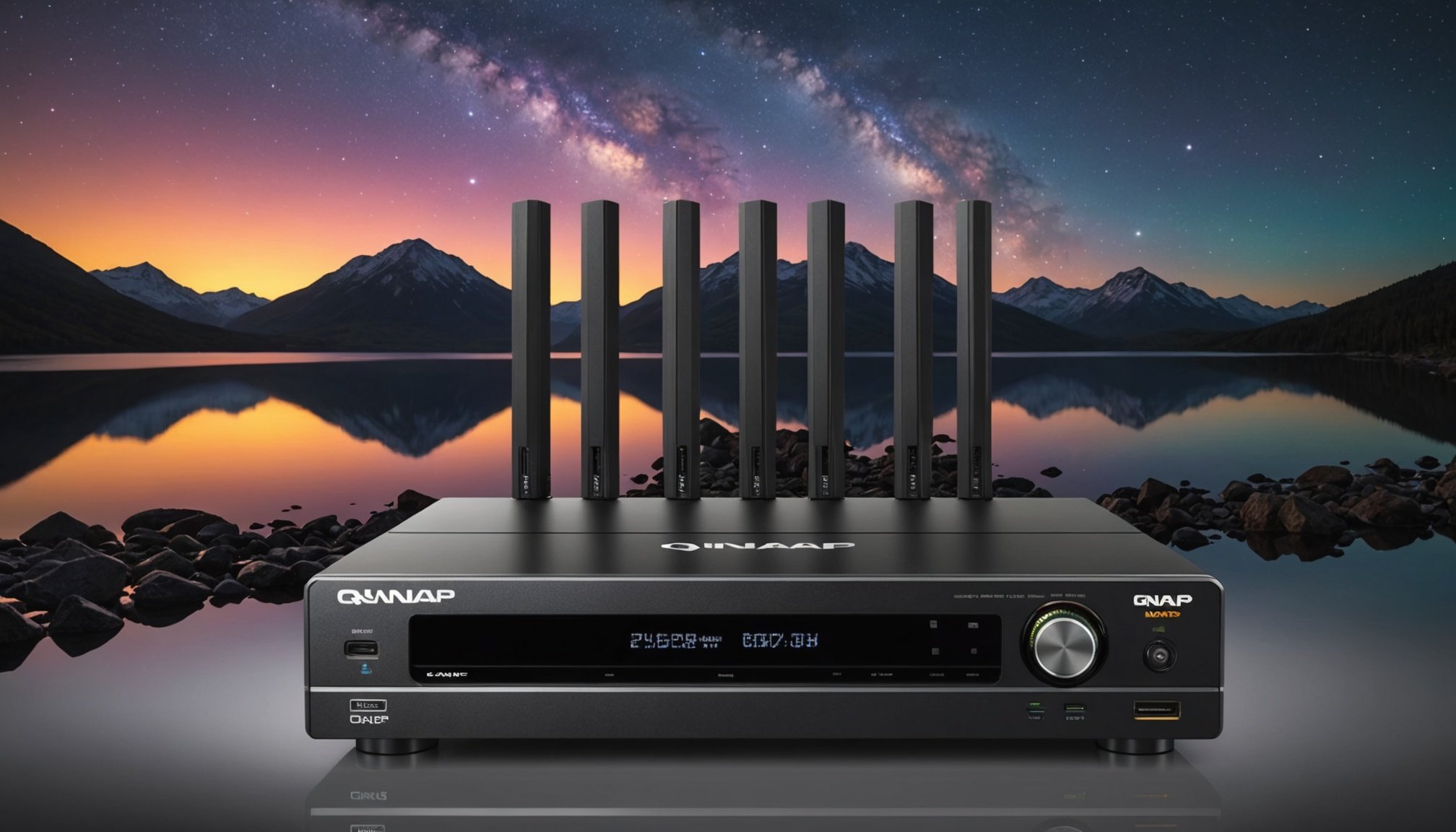Understanding the Basics of QNAP TS-451+ and Plex Media Server
If you’re eyeing the QNAP TS-451+ for your media needs, understanding its specifications is crucial. This QNAP NAS model offers a unique blend of performance and value. With support for up to 64TB of storage, it enables users to store extensive media libraries. The Plex Media Server thrives on such robust hardware, particularly when it comes to 4K streaming.
Plex integrates seamlessly with QNAP NAS to provide an organized media experience. For 4K enthusiasts, Plex’s capacity to handle high-definition content efficiently is indispensable. Key features that support 4K content include adaptive bitrate streaming, which dynamically adjusts video quality based on network conditions, ensuring smooth playback.
Additional reading : The definitive handbook for enhancing your intel nuc for flawless 4k streaming with kodi
Network configuration plays a pivotal role in effective streaming. A reliable network with adequate bandwidth is vital, especially if multiple users access content simultaneously. Ethernet connections are preferred over Wi-Fi to minimize latency, crucial for streaming 4K content without interruption. Configuring your router for optimal traffic flow, and ensuring your NAS is connected directly to the router, can significantly enhance your streaming experience. Understanding these basics ensures that you maximise the capabilities of your QNAP TS-451+ with Plex Media Server.
Step-by-Step Guide to Setting Up QNAP TS-451+ with Plex
Setting up your QNAP NAS for seamless integration with Plex is straightforward with the right guidance. This section will walk you through the preparation, installation, and configuration.
Also to discover : Ultimate guide: seamlessly configure your voip system using cisco spa112 and synology nas
Preparing Your QNAP NAS
Begin by ensuring your QNAP TS-451+ is properly connected to your network, ideally via Ethernet for maximum stability. This connection supports high-quality streaming and reduces potential buffering. Confirm your NAS firmware is updated by accessing the QNAP interface, which ensures compatibility and optimal performance.
Installing Plex Media Server
To install Plex Media Server, access the QNAP App Center. Search for Plex and select “Install” to initiate the process. Once installed, open Plex from the QNAP interface to configure it for your 4K content and media collections.
Initial Configuration Steps
- Synchronizing Media Libraries: Connect your media folders, ensuring the library is up-to-date and organized for efficient access.
- Setting User Permissions: Within Plex, allocate appropriate permissions for your household to manage media access responsibly.
- Ensuring Optimal Directory Structure: Use a well-organized directory format to aid in quick media search and minimize delays during playback.
By meticulously following these steps, your QNAP configuration will provide a robust foundation for a superior PLEX-driven media experience.
Enhancing Media Playback Quality
Media quality and playback stability are pivotal for an exceptional streaming experience with your QNAP NAS. Utilizing solid-state drives (SSDs) in your NAS can significantly improve performance, providing faster data access compared to traditional hard drives. This speed boost is crucial for smooth 4K streaming, as it reduces buffering times and enhances overall media responsiveness.
Investing in recommended network equipment is equally essential. High-quality routers and switches ensure ample bandwidth, supporting multiple users without interruptions. Devices like the ASUS RT-AX88U or Netgear Nighthawk RAX120 are excellent choices for robust streaming stability, thanks to their advanced traffic management features.
Maintaining a stable network connection is fundamental for uninterrupted playback. Simple practices such as positioning your router in a central location, eliminating physical obstructions, and minimizing interference from other wireless devices can enhance connection quality. Consider configuring Quality of Service (QoS) settings on your router to prioritise Plex traffic, which ensures optimal streaming performance. These measures collectively contribute to maintaining a superior playback quality that keeps your media experience consistently enjoyable.
Optimizing Plex Settings for 4K Streaming
Ensuring optimal Plex settings is crucial for a seamless 4K streaming experience. A key feature is adaptive bitrate streaming, allowing the server to modify video quality based on your network’s conditions, thus maintaining uninterrupted viewing.
Properly configuring transcoding settings also enhances performance. For optimal 4K playback, set the Video Quality within Plex to “Original” to minimize unnecessary transcoding. This ensures the server doesn’t expend resources altering high-resolution content when not needed. For those who require transcoding, enabling hardware acceleration can significantly boost efficiency. This feature utilizes your NAS’s hardware to perform these tasks more swiftly, reducing the load on your system.
Hardware acceleration is indispensable for users with varying network speeds or device capabilities. It enhances the streaming process by converting video formats on-the-fly, adapting to different device requirements. To activate this, navigate to Plex settings and enable ‘Use hardware acceleration when available.’ This ensures smoother playback and less buffering, which is especially beneficial for 4K content. Implementing these settings significantly alleviates the server’s burden, ensuring your Plex Media Server and QNAP NAS work harmoniously for an outstanding media experience.
Troubleshooting Common Streaming Issues
In managing your Plex NAS, encountering occasional streaming problems is not uncommon. Identifying and addressing issues promptly ensures a smooth experience for users.
Identifying Network Bottlenecks
Network bottlenecks often lead to buffering and lag. To pinpoint this, check your router’s traffic and bandwidth usage. Ensure that no single device is consuming excessive bandwidth, as this can affect Plex’s performance. Improving network quality can involve upgrading equipment or optimizing your current setup.
Resolving Playback Errors
Frequent playback errors can frustrate users. First, ensure your NAS and Plex software are up-to-date. Check the server’s resources to verify it’s not overloaded. Sometimes, reducing the streaming quality or enabling hardware acceleration can alleviate stress on the system.
Checking Codec Compatibility
Compatibility issues arise from unsupported video formats or mismatched resolutions. Plex supports popular formats like MP4 and MKV, but certain codecs may require transcoding. Ensuring the source video’s resolution matches the playback device can prevent quality loss. If problems persist, converting videos to widely compatible formats prior to uploading them to your NAS can be a practical solution. These troubleshooting strategies can enhance your 4K streaming experience, resolving common concerns effectively.
Advanced Features and Customization
In the pursuit of a tailored media experience, Plex customizations offer numerous possibilities. Users can begin by leveraging Plex Pass features. This subscription unlocks premium functionalities such as Live TV & DVR, allowing you to watch and record over-the-air broadcasts, and Mobile Sync, which enables offline media access. These features significantly enhance user interaction with content across devices.
To optimize remote access, a crucial aspect of Plex’s versatility, ensure your NAS is configured correctly. Enable “Remote Access” in Plex settings to stream content anywhere with ease. Port forwarding on your router might be necessary to maintain a smooth connection, depending on your network configuration.
Another avenue for personalization involves the user interface. Setting up collections and playlists within Plex helps organize large libraries, offering quick access to frequently watched shows or themed content. Establishing a family-friendly environment is also possible by customizing user controls. Create distinct user profiles and manage content restrictions to ensure age-appropriate access.
These advanced settings not only enhance the Plex experience but also add layers of functionality, catering to various user needs and preferences.
Equipment Compatibility and Recommendations
When optimizing your QNAP NAS with Plex Media Server for an exceptional 4K streaming experience, selecting compatible equipment is crucial. Investing in recommended devices can significantly impact performance and user satisfaction. Devices like Apple TV 4K or NVIDIA Shield TV Pro are renowned for their seamless integration and powerful hardware, making them apt choices for 4K content consumption.
Compatibility considerations with the QNAP TS-451+ involve ensuring that media devices and network components can handle the demands of high-resolution streaming. The TS-451+ supports a variety of streaming devices, provided they adhere to network configuration necessities, such as gigabit Ethernet capabilities for stable connections.
Integrating other media devices within your Plex setup can enhance the overall user experience. Devices like the Amazon Fire TV Stick 4K or Roku Ultra complement your NAS configuration by providing versatile streaming options. Maintaining a compatible ecosystem involves updating firmware regularly and ensuring all connected devices support the required video codecs and formats for Plex Media Server efficiency. By choosing the right equipment, users can enjoy smoother playback and superior media performance.











